-
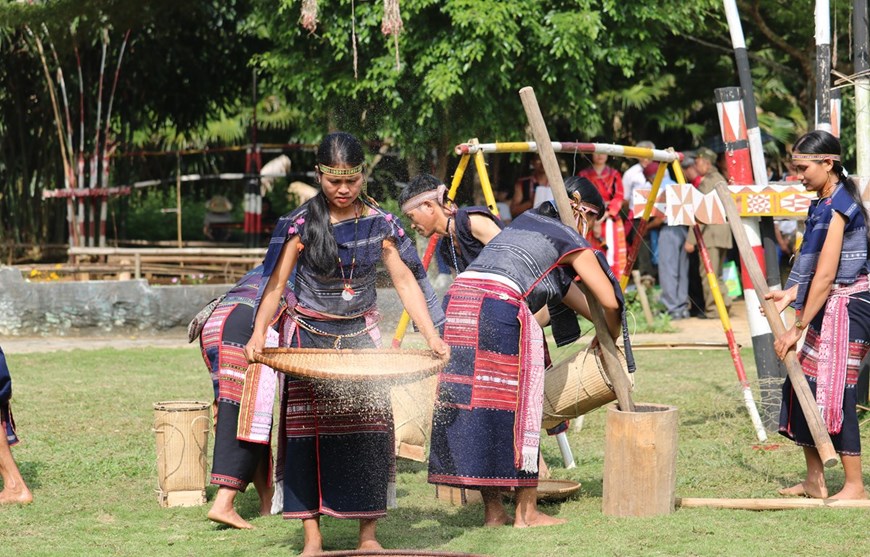
“Mung lua moi” (the new rice celebration) of the Ba Na ethnic people in the Central Highlands province of Gia Lai’s KBang district was restored during the “Great National Unity – Vietnam’s Cultural Heritage” week, held at the Vietnam National Village for Ethnic Culture and Tourism in Son Tay town on the outskirts of Hanoi from November 16 to 23. The celebration aims to preserve and uphold the traditional cultural value of Vietnamese ethnic communities and enhance the great national unity bloc, while promoting the Vietnam National Village for Ethnic Culture and Tourism as an attractive tourist destination among visitors from both home and abroad. (Photo:VietnamPlus)
-
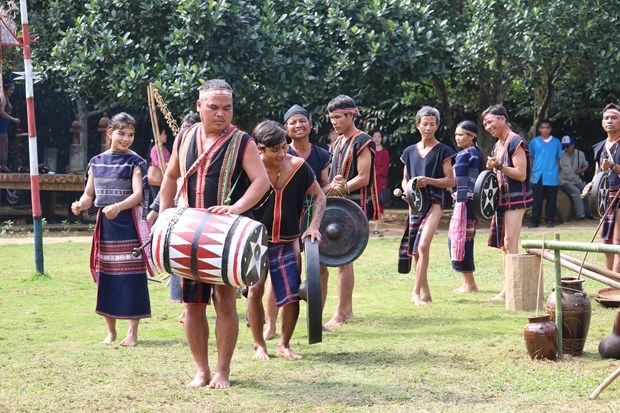
-
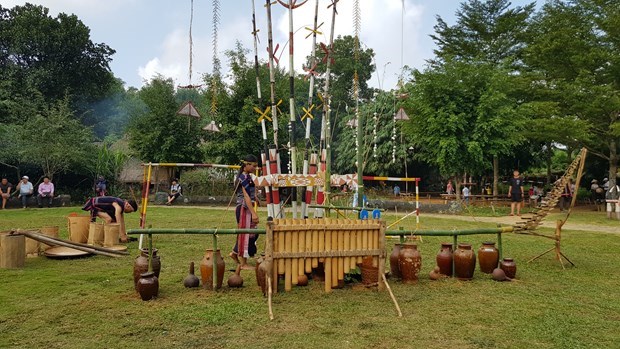
-
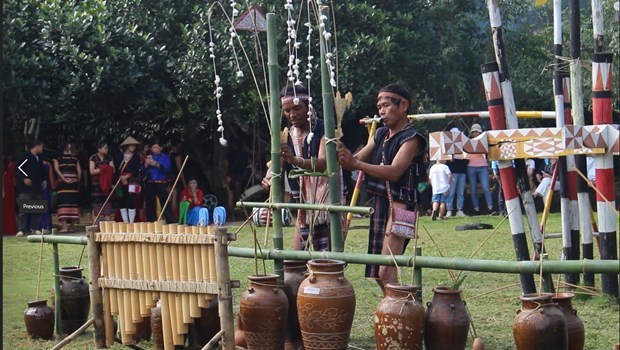
A Ngui, staff of Kbang district’s culture, sport and information centre, said the new rice festival always takes place in November and December when rice fields turn yellow. The village patriarch chooses a specific date for the new rice celebration, then informs all villagers. During the festival, villagers pay tribute to their gods, called yang, particularly Yang Sri (Rice God) for ensuring good weather for bumper crops. Billed as the largest festival of the Ba Na ethnic minority group in the Central Highlands, the festival includes two parts: the ritual to thank gods and pray for good fortune in the new year, and the festive activity with jubilant dances and songs to celebrate good crops. (Photo: VietnamPlus)
-
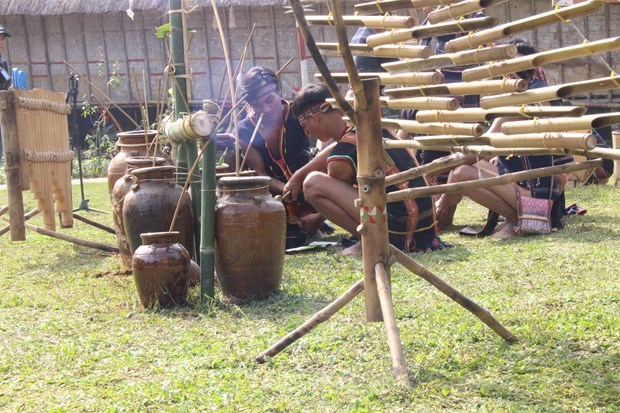
A Ngui was the script writer and director of the “mung lua moi” celebration, which reflects the Ba Na ethnic minority group’s primitive beliefs and fertility belief. They believe in Yang Nui (God of Mountain) and Yang Song (God of River), as well as fairy tales that explain natural phenomena around them. Each family needs to prepare one chicken, an alcohol jaw, and young rice. The Ba Na ethnics can celebrate the festival within their family, or gather at a large space to celebrate the event with the whole village. Preparation for the festival is assigned by the village patriarch, with middle-aged men making offerings to the god, and women preparing mortar and pestle, pot and rice to pound rice to make “com” (young rice). (Photo: VietnamPlus)
-
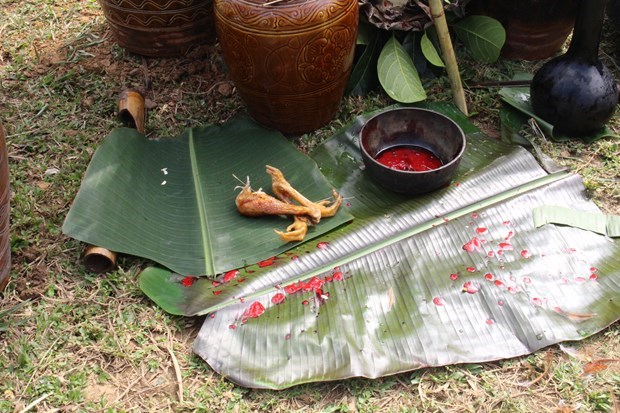
Ba Na men cut the neck of chickens to put blood on bamboo card, which will be taken to the forest later to raise up the spirit of Yang Sri (God of Rice). When everything is ready, the village patriarch starts the worship ritual by saying “Yang Sri, Yang Mountain Cho Lay, Yang River Ba! As our village is celebrating the first new rice festival, please come here, join us, and support us with bountiful harvest and good health for the next year”. Following a howl, Ba Na men beat the drums and gongs, and begin xoang dancing before coming to each family to congratulate them on the occasion of the new rice festival. (Photo: VietnamPlus)
-
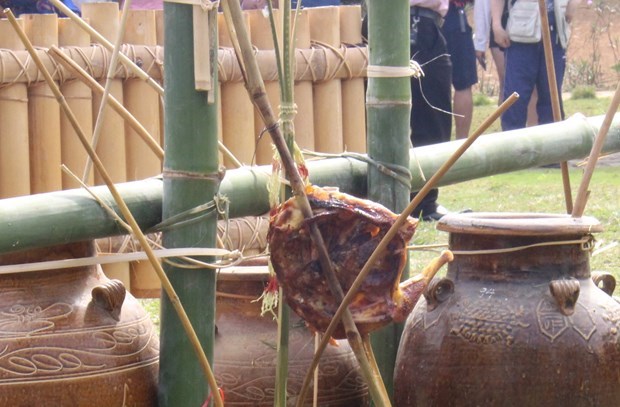
The Ba Na ethnics believe in Yang Nui (God of Mountain) and Yang Song (God of River), as well as fairy tales that explain natural phenomena around them. Each family needs to prepare one chicken, an alcohol jaw, and young rice. The Ba Na ethnics can celebrate the festival within their family, or gather at a large space to celebrate the event with the whole village. Preparation for the festival is assigned by the village patriarch, with middle-aged men making offerings to the gods, and women preparing mortar and pestle, pot and rice to pound rice to make “com” (young rice). During the festival, a rite dedicated to the god of water is conducted to ask for clean water, implying good health for villagers. (Photo: VietnamPlus)
-
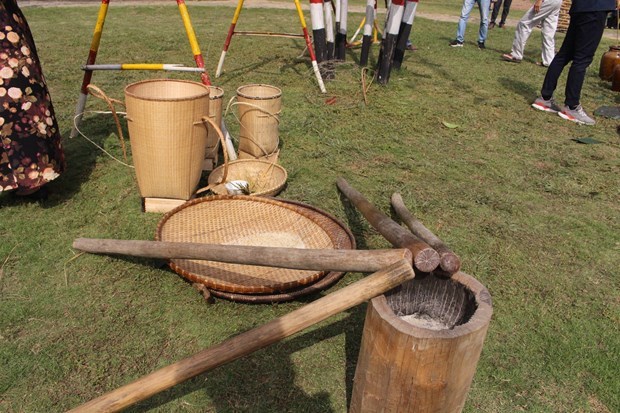
-

The Xoang dancers follow the beat of a Cho gut drum, which also leads the gong team. To the beat of drums and gongs, people form a circle and move anticlockwise slowly and rhythmically. Men and women take small steps and sway their body and arms slowly. They dance in the front yard of the communal house, around a tall bamboo pole called Neu tree, which is believed to ward off evil spirits. The Xoang dance describes a person’s lifespan. Movements imitate daily activities such as catching an animal, lighting a fire, cutting trees, and sowing seeds, and expressing emotions like love, compassion, and hate. (Photo: VietnamPlus)
-
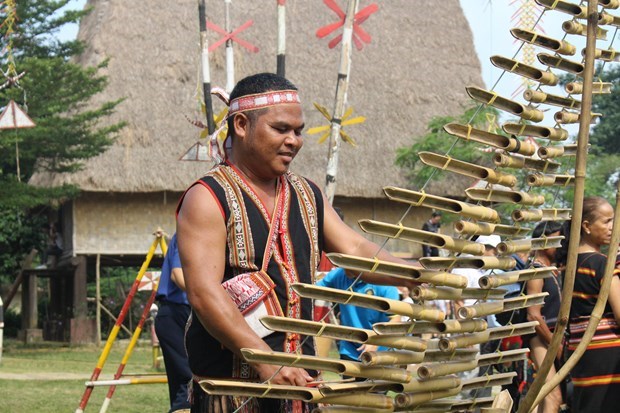
-
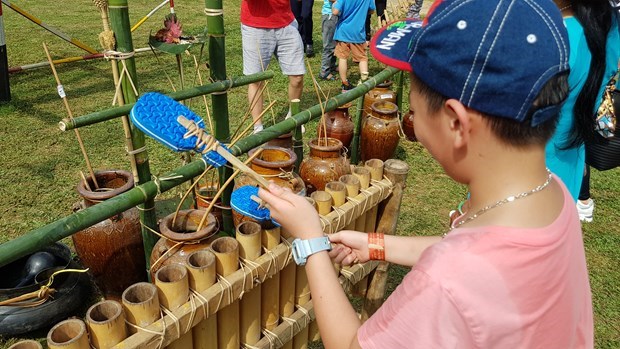
-
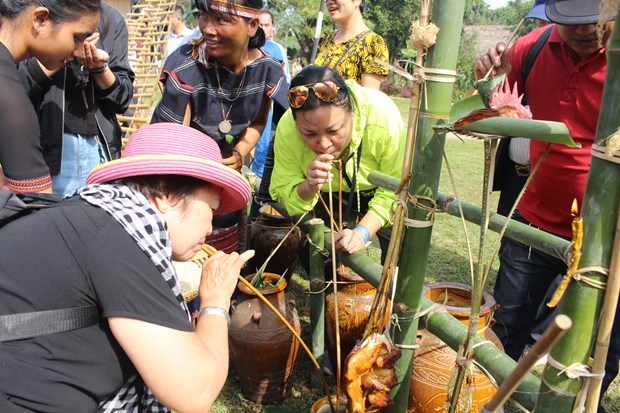
Visitors enjoy ruou can (rice wine drunk from a jar through stalks) at the ceremony. Ruou can is a fermented rice wine produced in in mountainous areas like the Central Highlands or the Northwestern region. It is made of cooked glutinous rice mixed with several kinds of herbs (including leaves and roots) in the local forests. The types and amount of herbs added differ according to ethnic group and region. This mixture is then put into a large earthenware jug, covered, and allowed to ferment for at least one month. When it came to the harvest or festivals, villagers gather together, playing instruments and drinking ruou can until everyone gets drunk. (Photo: VietnamPlus)
-
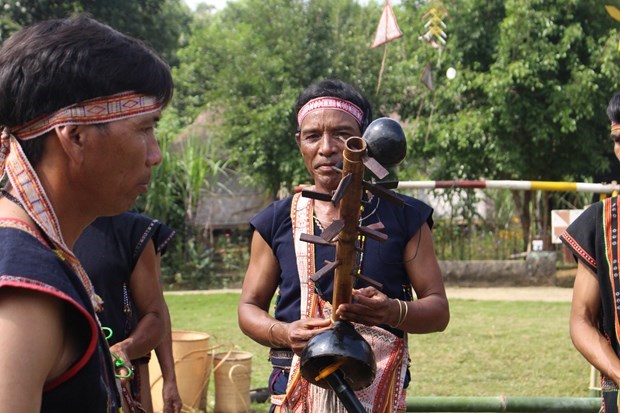
Living close to nature, the Ba Na ethnics have made many musical instruments from available materials like stone, wood, bamboo, rattan, leaves, and dried gourds. The hand-made musical instruments have unique shapes and sounds which distinguish Bana music from the music of other Central Highlands groups. The Ba Na ethnics have produced several kinds of musical instruments made from bamboo: the T’rung, the K’long Put, the Ding Jong, and the Dinh Hor as well as stringed instruments like the Ting Ning and the K’ni. Other interesting bamboo instruments are the Po-chet, a water instrument, and the Reng-reo, a windchime, which produce sounds when water runs or wind blows though them. (Photo: VietnamPlus)
-
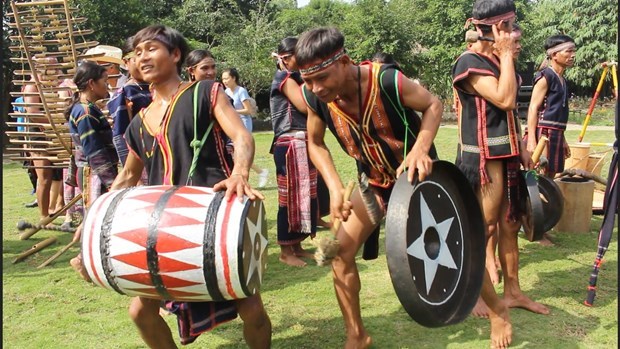
The “Great National Unity – Vietnam’s Cultural Heritage” week is organised to mark the 90th anniversary of Vietnam Fatherland Front (November 18, 1930-2020) and the 75th anniversary of Vietnam Cultural Heritage Day (November 23, 1945-2020). The highlight is an opening programme and a ceremony to honour 90 outstanding examples in the patriotic emulation movements and campaigns as well as in the building of cultural life in residential areas. This year’s event is expected to witness many innovations towards the spirit of great national unity as well as the preservation and promotion of the values of cultural heritages of Vietnam. In addition to around 100 people from 16 ethnic minority people living at the Vietnam National Village for Ethnic Culture and Tourism, 150-200 other artisans will participate in the event. (Photo: VietnamPlus)
-
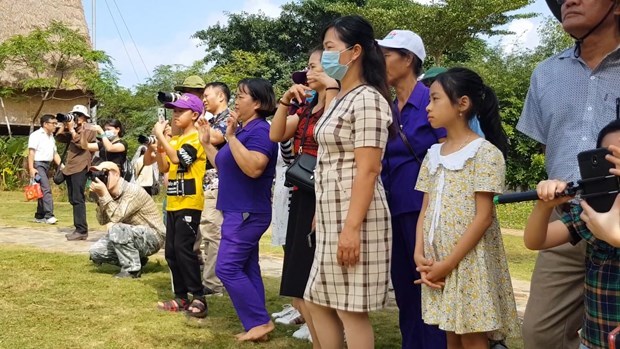
The week is an annual activity hosted by the Ministry of Culture, Sports and Tourism in coordination with the Central Committee of the Vietnam Fatherland Front. The activity is of practical significance to honor and encourage the great unity of the Vietnamese people and the values of Vietnam’s cultural heritage. This year, it took place at the Vietnam National Village for Ethnic Culture and Tourism in Son Tay town on the outskirts of Hanoi from November 16 to 23. The celebration aims to preserve and uphold the traditional cultural value of Vietnamese ethnic communities and enhance the great national unity bloc, while promoting the Vietnam National Village for Ethnic Culture and Tourism as an attractive tourist destination among visitors from both home and abroad. (Photo: VietnamPlus)
-
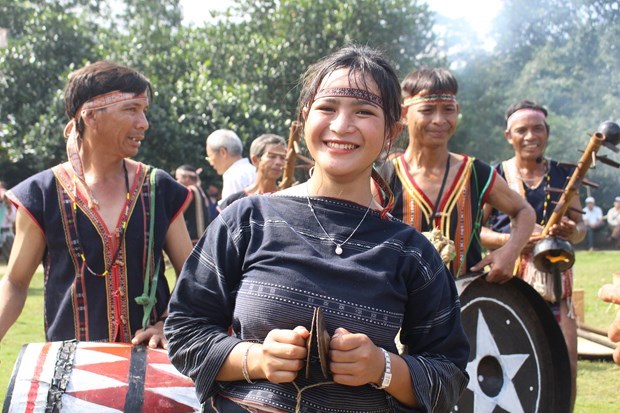
New rice celebration – the largest festival of Ba Na ethnic group
“Mung lua moi”, the new rice celebration, of the Ba Na ethnics in the Central Highlands province of Gia Lai’s KBang district was restored during the “Great National Unity – Vietnam’s Cultural Heritage” week.


